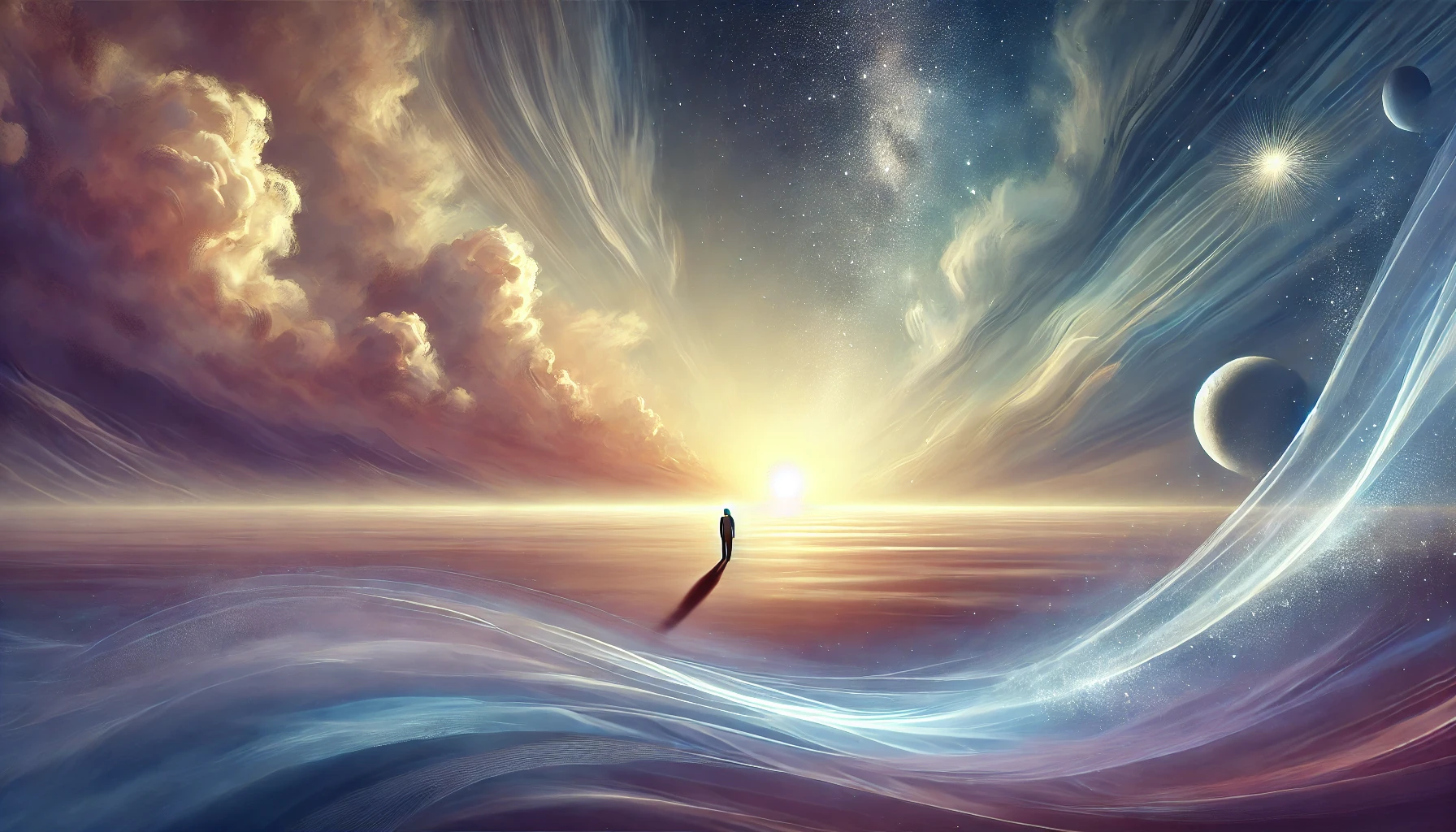The Butterfly’s Dream
“Once upon a time, I dreamt I was a butterfly, fluttering hither and thither, to all intents and purposes a butterfly. I was conscious only of my happiness as a butterfly, unaware that I was myself. Soon I awaked, and there I was, veritably myself again. Now I do not know whether I was then a man dreaming I was a butterfly, or whether I am now a butterfly, dreaming I am a man.”
Zhuangzi’s butterfly dream speaks to the nature of reality, identity, and the fluid boundaries between what is “real” and what is perceived. Are we, as we live our lives, truly awake—or are we still dreaming, lost in illusions of identity, separateness, and thought? If we were to wake up, what would we awaken to?
This question has echoed through spiritual and philosophical traditions, inspiring those seeking clarity on the human condition. Waking up is not simply realizing “this is a dream.” It is becoming aware of the dreamer—the deeper presence behind both the dream and the waking state.
Two Modes of Being: Thinking and Zoning
Human beings seem to live in two modes of operation.
- The Thinking Mind: This mode involves deliberate thought, analysis, and an ongoing narrative. It is how we solve problems, plan, and make sense of the world. Yet, it can become a trap. Overthinking pulls us into spirals of doubt, fear, and the illusion of control, obscuring the deeper awareness beneath it.
- The Zone: In this mode, we act without self-conscious thought. Athletes call it being “in the zone.” Musicians might describe it as flow. Here, actions arise effortlessly, and time seems to dissolve. Thought, if it occurs, moves in the background, untranslated into words. This state can feel like freedom, yet the question arises: Is it freedom from the self, or is it merely a reprieve?
The tension between these modes raises a profound question: Are we thinkers who occasionally zone out, or are we inherently “zoners” who became trapped in thought? And if we can live increasingly in the zone, are we escaping a limitation—or losing something essential?
The Awakening and Acclimatization
Waking up begins when you see both modes clearly for what they are. You recognize the dream of thought and the presence that flows through the zone. You glimpse the dreamer. But this awakening is just the beginning.
Acclimatization to awakening is the often-overlooked process of integrating this awareness into daily life. The moment of insight—realizing you are not your thoughts—is exhilarating. Yet, as old patterns persist, you may feel like you are oscillating between clarity and confusion.
Teachers like Ramana Maharshi and Eckhart Tolle describe this integration as a process of “abiding” in awareness. The thinking mind doesn’t disappear entirely, nor does the zone become a permanent state. Instead, a third way emerges: awareness in all states.
Awareness in Thinking and Action
When you are acclimated, thinking no longer binds you. It is seen as a tool—a function of the mind, rather than your identity. Similarly, the zone becomes more than a peak experience; it is infused with conscious presence.
Bruce Lee’s reflections on movement offer insight here:
“It is not, ‘I am doing this,’ but rather, ‘this is happening through me.’ The consciousness of self is the greatest hindrance to the proper execution of all physical action.”
Awareness in action transcends both thought and instinct. You are neither entangled in the “I” that overthinks nor lost in automatic flow. You are simply present.
Who Wakes Up?
The journey to waking up is full of paradoxes. Enlightenment is often portrayed as a destination—a moment where you finally awaken, never to return to the dream. But is this true?
Zhuangzi’s butterfly reminds us that the distinction between dreaming and waking is not absolute. The man dreams of being a butterfly, yet the butterfly might dream of being a man. Similarly, the “you” who thinks you are awakening may still be within a deeper dream.
Who is the dreamer? The one who thinks? The one who flows? Or the awareness behind both?
The Endless Process of Becoming
Waking up is not a single event. It is an unfolding—a process of deeper seeing, greater clarity, and continued surrender. The dreamer is not “found” but continually revealed. Each moment offers a choice to recognize awareness, to embody presence, and to act from a place of stillness.
And when you ask, “What else is there?”—you realize that the question itself arises from a need to grasp, to define, to reach an endpoint. But awareness is not something to grasp. It is not a thing. It is the vast, infinite space in which all things arise and dissolve.
In the words of Bruce Lee:
“Nothingness cannot be defined; the softest thing cannot be snapped.”
In acclimatizing to awakening, you come to rest in this nothingness, discovering that it is not empty, but full of life, love, and freedom.
Conclusion: The Journey Never Ends
The path of waking up is paradoxical. To awaken is to realize there is no final awakening—only an ongoing, infinite journey of becoming. Acclimatization means living in this truth, moving effortlessly between thinking, flowing, and simply being.
Zhuangzi’s butterfly, Bruce Lee’s reflections, and countless other teachings all point to the same insight: Freedom is not found in one mode or the other, but in recognizing the awareness that transcends them both.
So, as you walk this path, remember: The dreamer is not separate from the dream. To wake up is to embrace this mystery fully, with clarity, humility, and wonder.



